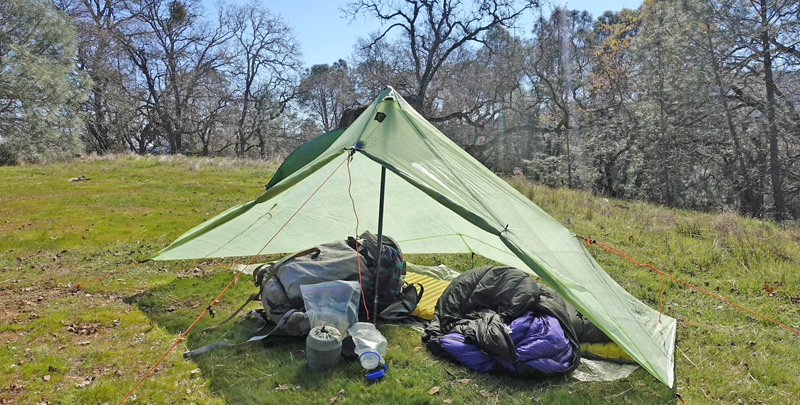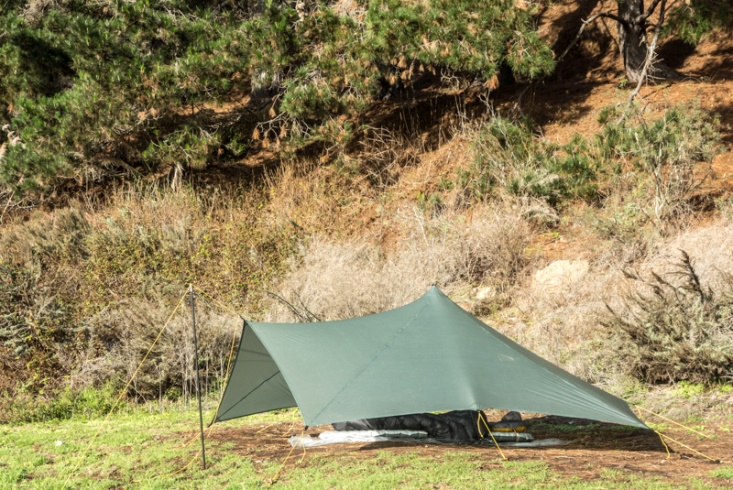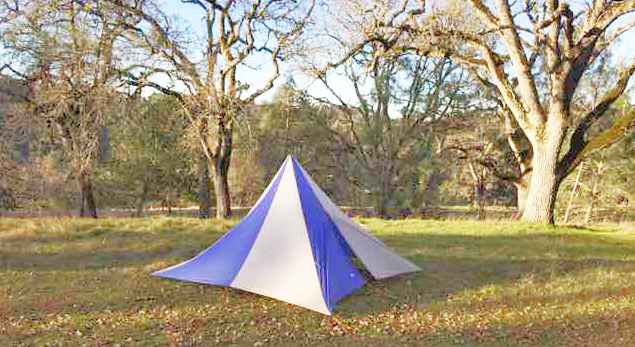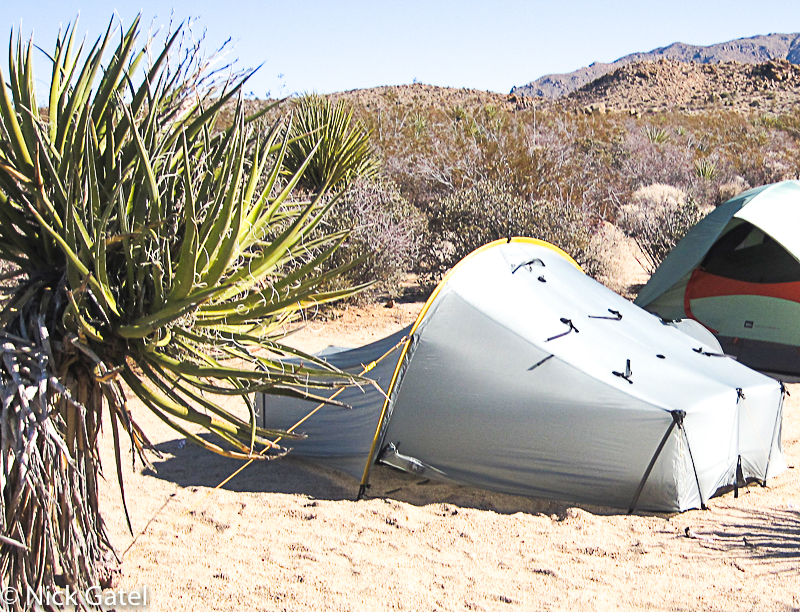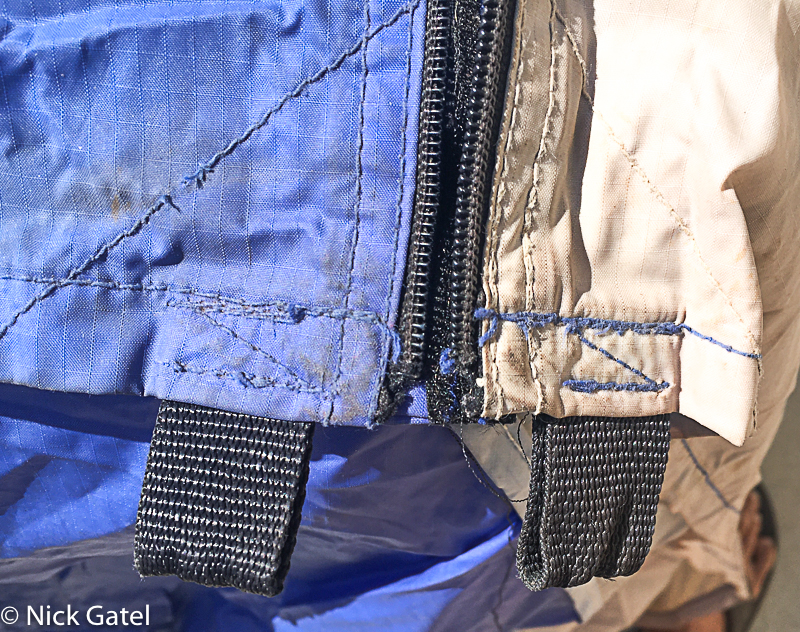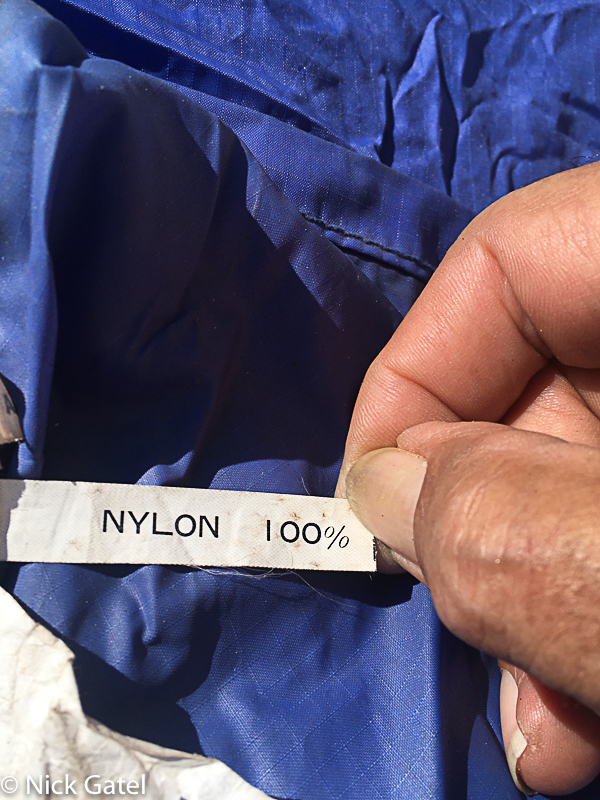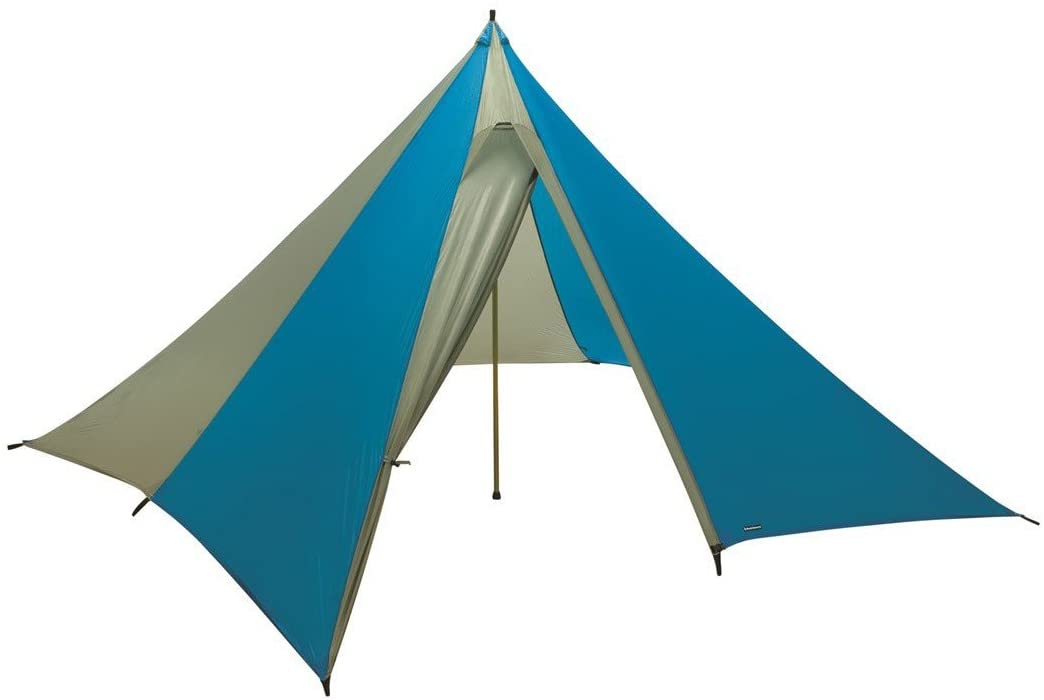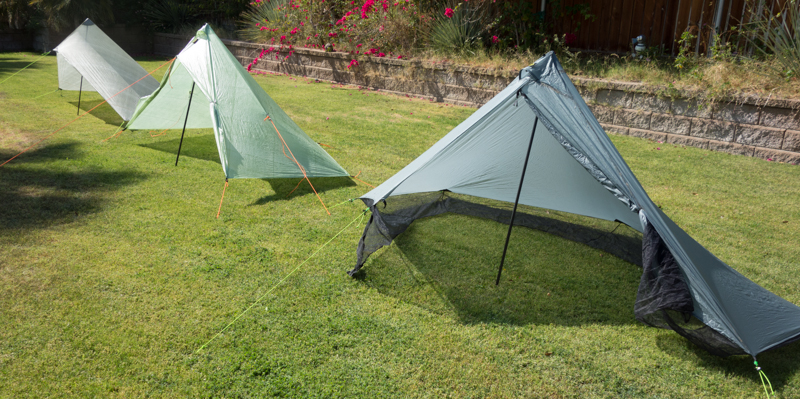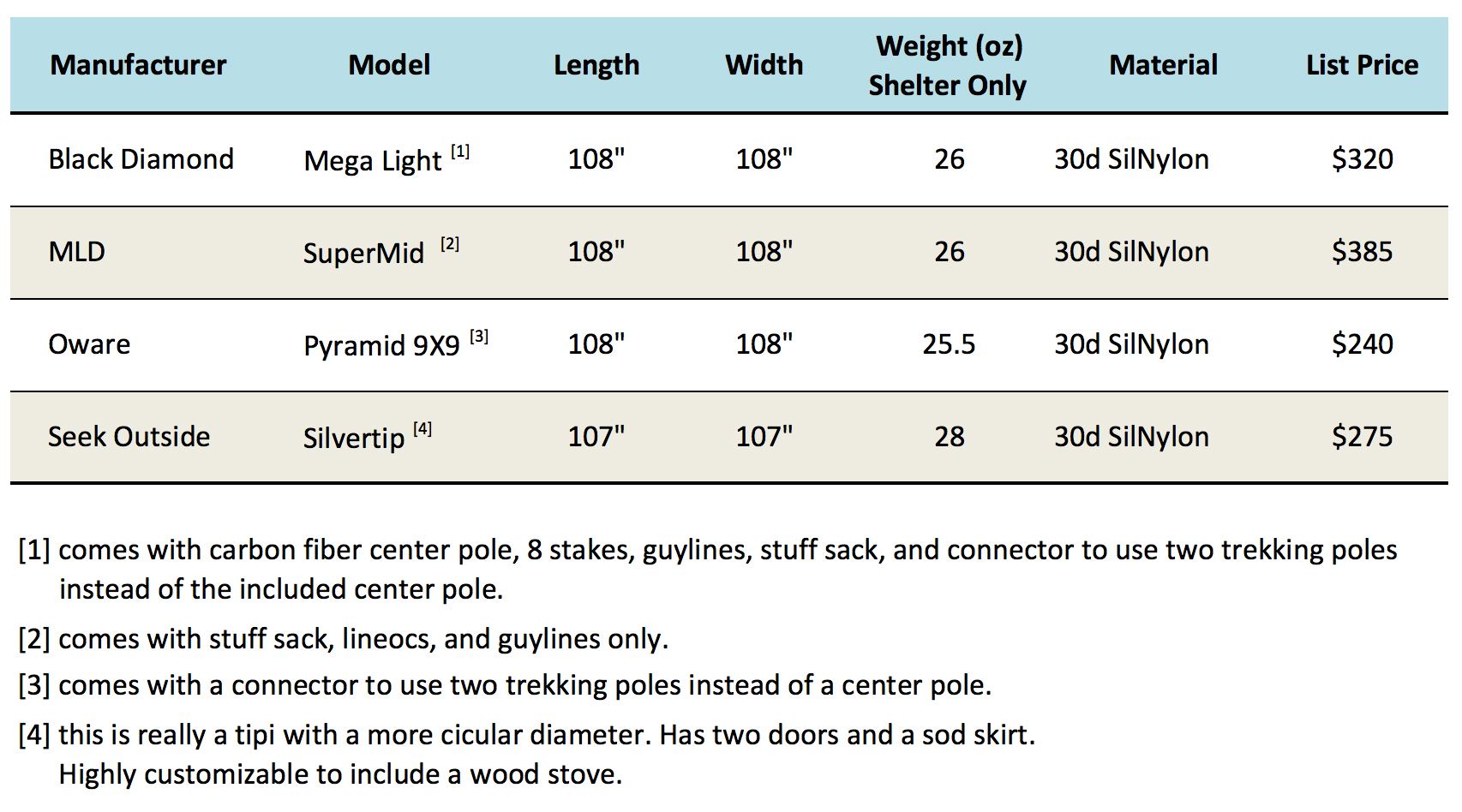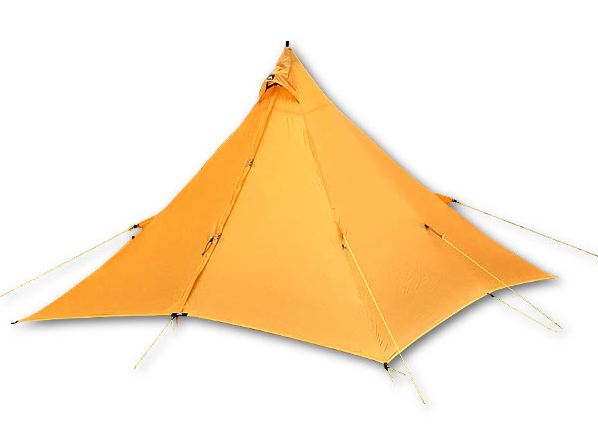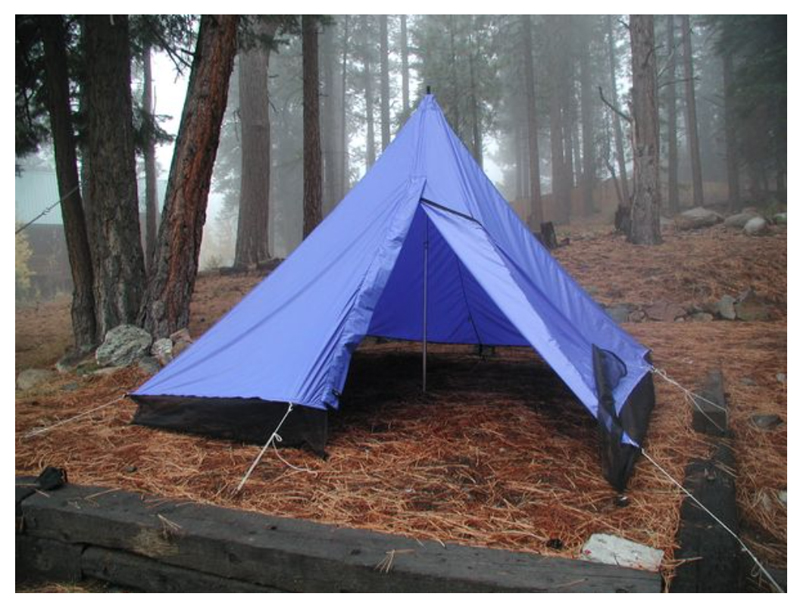This shelter is an old friend. It finally died. More specifically, it really isn’t cost effective to resuscitate it.
Death isn’t unknown to most of us. Just about everyone have friends and/or relatives who have passed away. We cannot replace those loved ones. The same goes for pets. Our wonder dog, Corky, passed away last year and he cannot be replaced. Oh, we could get another dog, but Corky was Corky, an animal with a personality and distinctive characteristics.
A shelter can be replaced. What is replaced? A completely different shelter with dissimilar construction would be a replacement. A similar shelter with the same materials, shape, and structure might be considered a direct replacement.
I am going to get a direct replacement.
Yes, I already have several shelters, but each serves a specific purpose. My inventory of actively used shelters include:
- Six Moon Designs Deschutes CF
- Mountain Laurel Designs (MLD) TrailStar
- Chouinard Pyramid (now deceased)
- Tarptent Scarp 1
- A flat tarp made of Cuben Fiber (now called Dyneema® Composite Fabrics)
The Deschutes is my “go to” shelter. This is the one I take on most trips. It is a six-sided pyramid shelter made from Dyneema® Composite Fabric weighing just under 10 ounces without the single pole and stakes. Five years ago I wrote a lengthy article on small pyramids and an initial review of the Deschutes.
The Mountain Laurel Designs TrailStar is a five-sided pyramid made from 20-denier Pro SilNylon.
The MLD website states the 20D Pro SilNylon is,
…High Tenacity Type 6-6 Ripstop Nylon with a double coated and impregnated silicone on both sides for maximum strength and long tear high water resistance. Pro SilNylon does not mist or leak in any weather condition.
I did an initial review of the TrailStar back in 2013. After sealing the seams with silicon and adding guy lines, it weighs 22.61 ounces without the two poles and the stakes. This is a serious shelter when it comes to shedding wind, and I only take it when I anticipate very windy weather. As I wrote back in 2018 , if I could only have one shelter, this would be the one.
If the TrailStar is the shelter I would pick if I could only have one shelter, the Chouinard Pyramid is my favorite shelter of all tents and tarps I have owned in the past 50+ years.
The Tarptent Scarp 1 is the shelter I use for most winter snow trips. I’ve owned it for 10 years now. Eight years ago I posted this review here.
This shelter is constructed with 30-denier silicone coated nylon. Compared to my other shelters, this one is the heaviest weighing in at 4 pounds, to include the poles and stakes.
The Cuben Fiber Flat Tarp is just a flat tarp. Nothing fancy and I have never reviewed it. It weights just under 5 ounces, and is approximately 9 feet long by 8 feet wide (actually 9′ long, 8’6″ wide at the head end, and 5’6″ wide at the foot end). When the weatherman forecasts a slight chance of rain, I take this tarp with me.

Why I Bought the Chouinard Pyramid
Need for a Winter Shelter
Sierra Designs Flashlight I
During the late 1970’s I began to venture into the local mountains during winter to try my hand at backpacking and camping in the snow. My first purchase was a double-walled Sierra Designs Flashlight tent. My memory is a little fuzzy, but I am fairly certain that it was the late 70’s (I paid around $135 for it), as I remember getting stuck in my tent during a snowstorm. I didn’t have snowshoes and it was a miserable trek back home.

The Flashlight weighs 3.5 lbs. and in its day was extremely light and roomy for one person (it was marketed as a two person tent). Because of the sleeves inserted into the main body, it was very stable in winds.
 Notice that the poles slide into the sleeves of the tent fabric.
Notice that the poles slide into the sleeves of the tent fabric.
The main advantage to a double-wall tent is that condensation does not form on the inner tent fabric; it moves through the fabric and collects on the outer fly. We knew this in the ‘70s.
The main disadvantage of a double walled shelter is that it is heavier than single walled shelters. Prior to buying this tent I had found that the condensation under a tarp resulted in wet gear and in particular a damp sleeping bag.
The Flashlight is really a 3-season tent, not designed for snow. In a blizzard on my first trip with this shelter I had to get up every hour or so to knock the accumulated snow off the tent.
In the early 80’s Sierra Designs came out with the Flashlight II, which used clips to attach the tent to the poles. Not as good a design, but much cheaper to make. Sierra Designs still makes this tent.
Chouinard Pyramid
Unhappy with the Sierra Design’s Flashlight as a winter tent in snow, I purchased the Chouinard Pyramid tent in1985. Unable to afford a true 4 season double-walled tent, the Chouinard appealed to me because of its
- Price (paid around $90 at REI)
- Light weight (2 lbs 9 oz without poles and stakes)
- Stability in poor weather
- Large interior area
What did not appeal to me after using it was
- Condensation on the walls in cold weather
- A pole in the middle that forced me to sleep on either side
A fact of life is no shelter is perfect and one has to give up some bad attributes to enjoy the good.
Sierra Designs Super Flash Tent
After mixed results in winter with the original Sierra Designs Flashlight and the Chouinard Pyramid I finally purchased this tent in 1989. I am fairly certain I paid about $235 for it, almost 4 times more than the Chouinard Pyramid. It is a true 4-season tent and was used by the U.S. Antarctic Program along with the 11 lb. North Face VE-25 (a serious-ass mountaineering tent at 11 lbs.) as standard issue shelters for Antarctic expeditions. The Super Flashlight weighs 6.2 lbs. Yes, I still have the original Flashlight and the Super Flashlight in my gear closet.
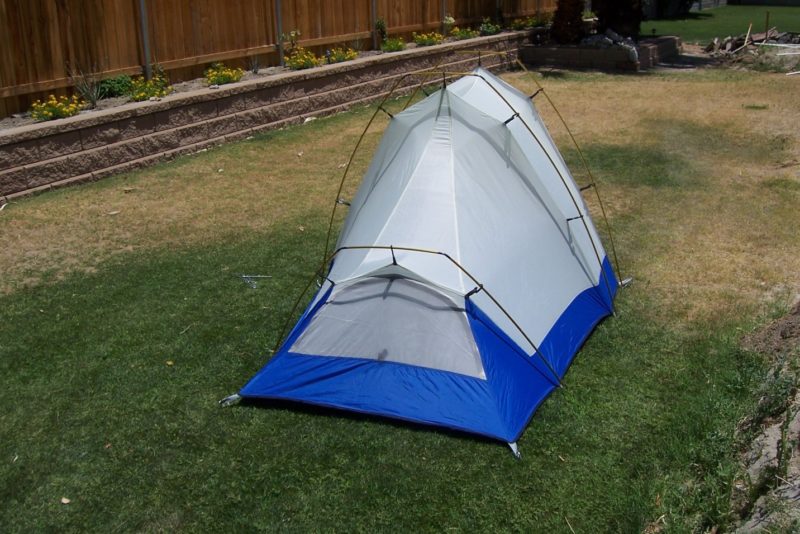
To be really secure in the worst weather, the Super Flashlight requires all tie-outs be used, which means 20 stakes. It will handle just about anything Mother Nature can throw at you. By this point in time, on my solo winter snow trips, I was lugging snowshoes, crampons, ice axe, snow shovel, ski poles, and assorted heavy gear. I had to buy a huge pack to carry all this stuff, an external frame Kelty Serac Expedition Pack, weighing over 7 pounds!

So I pared back down and started using the Chouinard Pyramid for these trips. This shelter had much more room, which is wonderful when one is stuck in a blizzard for a few days, and there is enough room inside to cook meals. The biggest compromise, because there is no perfect shelter, is the single walled pyramid gets a lot of condensation on the inside of the walls. However, with a shelter this large, it is fairly easy to keep gear from getting wet, unlike a smaller tent.
On the other hand, the Chouinard packs down into a fairly small package, especially for a shelter made in 1985.
In recent years I have continued to use the Chouinard almost every year, although not often. I especially like it in the desert in rainy season. It has lots of interior room.
Death
There are a few things that have gone bad with this shelter.
Broken Zipper
The first is the zipper. The bottom mechanism (both sides) have separated and fallen off.
This isn’t a waterproof zipper. Behind each side of the zipper is Velcro, which seals the entry against rain, and the Velcro is worn and needs to be replaced at the same time. In the picture below, the Velcro on the right side needs to be folded over to mate with the zipper. Then the zipper is closed. If closing the zipper from inside the shelter, it is easy to hold the Velcro away from the zipper, and then press the Velcro to seal the entrance.
The zipper is 40 inches long. Both the zipper and the Velcro need replacement, unless a newer style waterproof zipper can be sewn in. Whatever type of zipper is used, it needs to be robust as there is a lot of tension on it when the shelter is closed up, especially when the weather gets windy.
Talking to a couple friends who sew, this isn’t an easy repair and definitely needs a sewing machine to do it properly. My research led me to Rainy Pass Repair, a company with a stellar reputation for repairing tents and outdoor apparel.
To get an accurate estimate for a repair, the item needs to be shipped to them for inspection, which makes complete sense to me. They do have some guidelines for informational purposes (see below):
I have a feeling the replacement of my zipper with the Velcro strip or a heavy-duty waterproof zipper would cost $200 or more. I don’t feel this is out of line, knowing that a business must make a profit and “time is money.” It is more than I want to spend, plus I have another problem: delamination of the material. So, a proper repair might cost as much as a new shelter.
PU Coating is Delaminating
The second problem is the water proof coating is separating from the tent fabric.
Back in the ‘70s and ‘80s inexpensive shelters (think department stores) were made out of polyester. Quality shelters were made from nylon. The Chouinard is made out of nylon, per this tag I found:
Like almost all polyester and nylon shelters back in those days, the inside of the material was coated with polyurethane (PU). Over time, the PU coating can, and usually will, delaminate. The first indication is the material off-gases a foul smell and the material gets kind of sticky. Sometimes a white residue is left behind to indicate delamination. My Chouinard Pyramid is becoming sticky and smelly.
I have successfully restored a few Polyurethane (PU) coated nylon flat tarps over the years.
To restore the fabric one will need to remove all of the PU coating, which is applied to the inside of the fabric. I don’t know of any chemical that will remove the PU without damaging the nylon. So I would need to wash the coating off.
One thing you should NEVER do is put your shelter in a washing machine, whether it is PU coated or the more common silicone nylon used today. There is one exception to this rule: if you want to remove the PU coating, the washing machine is your friend. Here is what I do.
- Machine-wash it with dish soap, such as Dawn.
- Machine-wash it again with Woolite.
- If all the coating is not removed, a soft nylon brush with dish soap and water should finish the job. Be gentle!
- Run it through the washer again without any soap.
- Hang dry it.
Disclaimer: Do this at your own risk. If for some reason the shelter is damaged by the washing machine I am not liable, not responsible, and I probably do not exist. In our household, the boss isn’t going to let me use her washing machine for this kind of operation, so I would have to wait until she leaves for a while. That ain’t gonna happen for a while given we are under lockdown due to the coronavirus; and this would be the ideal time to do it.
McNett’s Gear Aid Tent Sure Polyurethane Sealant
Once the shelter is completely dry, you will need to coat the inside of the fabric.
Years ago I made my own mixture, but McNett’s Gear Aid Tent Sure Polyurethane Sealant is a better way to go. Follow the instructions.
Some shelters you may need to apply it in sections, with the shelter spread on top of a large table. With my pyramid I could just set it up in the backyard inside-out and apply the Tent Sure.
After applying the Tent Sure, it needs to dry for several days.
Lastly, apply a thin layer of talcum powder before you store the shelter.
And so here is my dilemma. The pyramid is large and enough Tent Sure is going to cost at least $25. The cost of repair is getting up there! Might as well buy a new one, rather than repair the old.
So I want to replace it with something similar: a large, floorless, pyramid shelter. It is research time. I am fairly knowledgeable about pyramid shelters, and am pretty sure what I am going to buy, but haven’t made a final decision yet.
However, I want to share the process, as it might help someone who is thinking about buying a pyramid shelter.
Pyramids
A pyramid is a 3 dimensional shape, where the sides are triangles, and the sides meet at the top in a point. That is the simple definition. So, a pyramid must have at least 3 sides. Pyramids are an ancient design, which obviously work to support immense weights.

Add enough triangles, and you get a shelter resembling a tipi.
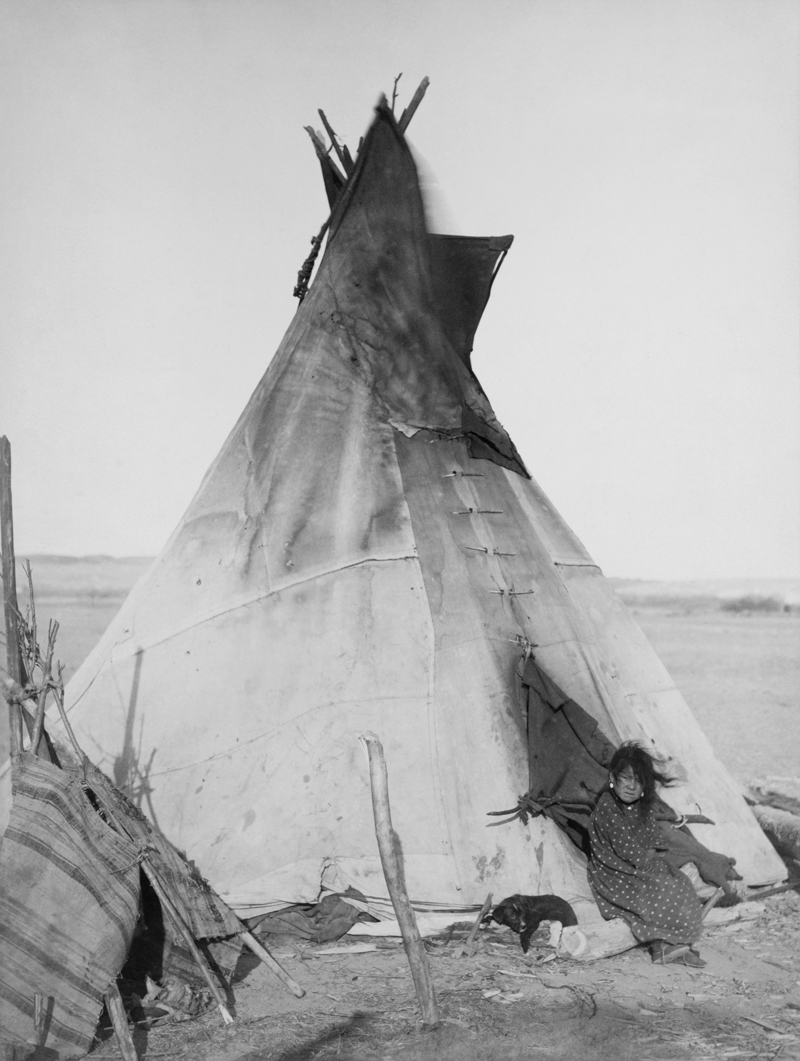
Chouinard Equipment History
I think this was the first mass produced, reasonably priced, pyramid ever made. Chouinard Equipment Co LTD, a company founded by Yvon Chouinard, who also started Patagonia the clothing and gear company, produced the shelter.
Hells, bells, just buy a new one from Chouinard or Patagonia, right? No… there’s a long story behind this.
In the ‘80s Chouinard Equipment focused only on mountaineering and rock climbing gear – very specialized stuff. It was a subsidiary of a much larger company, Lost Arrow, which also included Patagonia and other businesses. Lost Arrow had assets over $70 million, while Chouinard Equipment Company’s sales were just $6 million a year. In 1989, Lost Arrow filed for bankruptcy protection so they could sell Chouinard Equipment Company.
From an LA Times article in 1989
Company officials claimed that the firm’s finances were sound but said that pending lawsuits and the rising cost of liability insurance prompted the move. “I’ve taken a lot of pride in making the world’s best climbing equipment and trying to do a good job at it, but times have changed,” Chouinard said this week. “Nobody wants to take responsibility for their actions, to say, ‘I screwed up, it’s my fault, I didn’t bother to learn how to use the gear.’ ” Company officials said that four lawsuits blame Chouinard for injuries allegedly caused by inadequate instructions and warnings on climbing harnesses and other equipment. Chouinard denies the allegations. Officials of Lost Arrow, the umbrella firm that runs Patagonia, Chouinard Equipment and several other companies, declined to identify the plaintiffs, or to say where or when the suits had been filed. “No equipment failed and no equipment broke, but when people get hurt . . . they sue,” said Kevin Sweeney, a Lost Arrow spokesman. Chouinard said that none of the lawsuits were filed by experienced climbers. They were filed by beginners in climbing school, a window washer and an actor who used the equipment on stage, he said.
Lost Arrow ended up selling the assets of Chouinard Equipment to a group of employees, who form a new company, Black Diamond Equipment, which is still in business some 30 years later. And guess what? They still make a pyramid similar to the original. But is it the best option for me?
Chouinard Pyramid Features
The shelter is a four-sided pyramid. Each side consists of two right triangles of alternating colors to form the side. The bottom of each side is 100 inches long. The height of the center pole is well over 60 inches, if I remember correctly. If you look at the picture above, the shelter is tight and taunt. Using a catenary cut on the seams, the sides appear to be curved inwards as if it is set up loosely.
Black Diamond Mega Light (the successor)
The specifications show it is 86” X 86” at the base, however I suspect it might be larger, and those dimensions are the actual living area (you can sleep next to the side, because of the slope). The specs say the total coverage is 81 square feet, which is 9 feet X 9 feet, which would be 108 inches X 108 inches. This probably is more than the length because when pitched the fabric is above the ground. So I’ll guess the dimensions are pretty close to the original. I’ll have to call Black Diamond.
The stated height is 66 inches set up.
The stated weight is 2 lbs. 5 oz. with poles, guylines, and stakes. This might sound heavy to the ultralight crowd, but keep in mind; this shelter can sleep 4 people. Plus, Black Diamond doesn’t state the weight of the shelter alone, as do most “ultralight” manufacturers. Someone should talk to their marketing people!
I’m not interested in an expensive exotic fabric like Dyneema Composite. SilNylon is fine.
The material is 30-denier silicone coated nylon. Compared to PU coated nylon, this SilNylon is lighter, has greater tear strength, and packs smaller. Plus one doesn’t have to worry about delamination. Since the last shelter lasted almost 35 years, I wouldn’t be too concerned if it was PU coated, since I don’t plan on living another 35 years, which would put me at 105 years old.
Other ‘Mids on the Market
The Chouinard and Black Diamond pyramids have square bases, which is what I am looking for… or at least close to square. Today many, if not most, of the ‘mids on the market are obviously rectangular, with an eye to the sleeping area and keeping the weight as low as possible (see picture) below.
I am considering four pyramid shelters at this point in time.
Black Diamond Mega Light
Website: https://www.blackdiamondequipment.com/en_US/homepage
I have already reviewed most of the features of this shelter. I should note the Mega Light does not have guyline tie-outs midway up the side panels for additional stabilization in more severe winds, where the wind can compress the windward side of the shelter. I have never needed these midway tie-outs in the Chouinard, and when I expect epic winds I take my MLD TrailStar, which out performs all of these pyramids.
The Mega Light is readily available from many 3rd party sellers, to include Amazon.
Mountain Laurel Designs SuperMid
Website: https://mountainlaureldesigns.com
MLD is a large “cottage” manufacturer. Most items are made after they are ordered and paid for. Currently their website says items costing over $100 will take 6-8 weeks to be shipped.
I have purchased a few items from MLD over the years. Their products are well designed and the craftsmanship is outstanding. The SuperMid has 4 mid-panel tie-outs.
Oware Pyramid Tarp 9X9
Website: https://bivysack.com
Oware is a smaller cottage company located in Spokane, WA. They have been in business for a long, long, time. The Pyramid Tarp 9X9 has been in production since 1986. It has 4 mid-panel guy tie-outs.
I have never purchased anything from them, but they have a stellar reputation. I won’t hesitate to purchase from them, should I decide that this shelter is the one that would best meet my needs.
Seek Outside Silvertip
Website: https://seekoutside.com
Seek Outside is an 11-year-old company located in Grand Junction, CO. Just a few years ago they had an almost cult following among hunters. Building top quality and light gear, Seek Outside, has become a favorite among backpackers.
The Silvertip’s base is almost a circle, rather than square as the three shelters above. Its stated 107” diameter places it in the category of shelters I would consider. I’ve never seen a Silvertip. Several people I know and respect speak highly of this shelter.
The options that are available for this shelter are too numerous to mention. It comes with two doors, and has two mid-panel tie-outs.
Summary
I’m going to buy a large pyramid, which won’t be my primary shelter.
One thing I haven’t mention is the pyramids discussed, have tall entrances, making it so easy to get in and out. The three other shelters I use require getting on hands and knees to enter and exist, especially the TrailStar. Having to crawl into a shelter isn’t a big deal for me at this point in time.
I’ll let you know what I do, when I make a final decision.
This website may be compensated for linking to other sites or for sales of products. As an Amazon Associate I earn a small fee from qualifying purchases at no additional cost to the purchaser.

